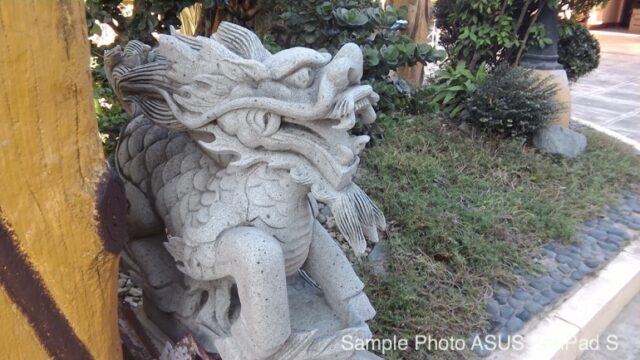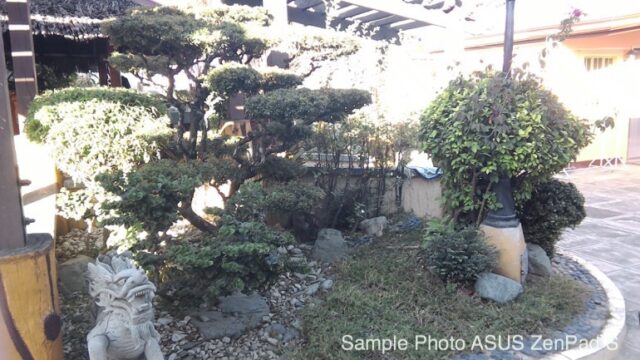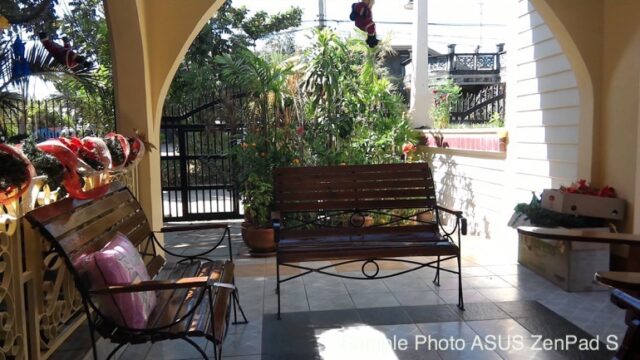[su_spoiler title=”Table of Contents” open=”yes” style=”fancy”]
- Introduction
- Build and Design
- Screen
- Software
- Gaming and Performance
- Connectivity
- Camera
- Battery Life
- Verdict
[/su_spoiler]
I was one of the early adopters of the 1st iPad. It was my first tablet, and I loved every bit of it. As an Apple fan, I regarded the iPad as something that had the potential to outsell and outperform the netbook. Later, I found myself replacing it with the iPad 2, then to the new iPad (Check our review here), then to the iPad Mini.
The iPad Mini, in my opinion, was Apple’s best response to the growing demand for a more compact tablet, targeted to executives, gamers and even kids. 7.9 to 8.0 screen is by far the best screen size for tablets, and Apple managed to hear such consumer demand and sustained it for 4 consecutive iterations.
Apple has remained to be dominant in the tablet race, but the playground has greatly changed ever since Google intensified its tablet strategy. Apple’s tablet software ecosystem may be nearly perfect, but Android’s part has been greatly catching up. Worldwide tablet market continues to decline, according to IDC , but it’s worth noting that brands like ASUS started to get into the picture.
A couple of months ago, we reviewed the ASUS ZenPad 7.0. A tablet that’s aimed to bring quality tablet features to more Filipino consumers. There are notable issues we raised, but it’s proven to be one of the bang-for-the-buck tablets around. A month after we received the ZenPad 7.0, ASUS sent us another tablet – this time with a luxurious flaire, the ASUS ZenPad S 8.0.

The tablet is made impress and wow, and if you want to see how great it looks, you can head on to our unboxing and first impressions on this link.

ASUS’ luxurious tablet looks fantastic, and I’m not overreacting. It is one of the the thinnest tablets around, and certainly the most beautiful I’ve seen and used so far. With or without the ZenClutch attached, the ZenPad S 8.0 oozes with extravagance. Its chromed side bezels and two-toned (brushed aluminium and faux leather) back panel give it a very premium look.

Much like the ZenPad 7.0, it is primarily thought of to be used horizontally as evidenced by the orientation of the ASUS logo at the back. There is no feeling of inconvenience when using the device vertically. The soft touch faux leather at the back give additional grip, and accessing the sleep/wake and volume keys are a breeze in any orientation.

The tablet’s distribution of weight is equal, and that’s gold when it comes to design. Holding it with just one hand doesn’t bring inconvenience even when using the device for too long.
It has wide top and bottom bezels. It’s ASUS’ design decision so it can accommodate the dual front speakers located at the top and bottom of the tablet when held vertically.
ZenPad S 8.0’s screen is gorgeous. It should be ‘gorgeous’ because this is the flagship feature of the tablet. ASUS is highly successful in flaunting this feature, and they have convinced me to love it deeply.

To appreciate its value, let me give you a technical rundown of its screen and give you a drill-down of each feature.
For starters, it has a QXGA 8-inch LED Backlight IPS panel. If you’re into resolutions, you’d probably appreciate more if I say that this tablet has a 2K display with resolution of 1536 x 2048 just like the iPad Mini 4. Texts on its screen appear a lot clearer and sharper no matter how small they are. Rich media content look so vivid and evenly saturated.

It is able to register up to 10 fingers, and also a neat feature of rejecting palm, which makes it writing using a stylus much easier.
If your concern is the durability of its screen, you’d be glad to know that its screen is protected with Corning Gorilla Glass.
Innate to ASUS is its love for injecting software innovations that complement the hardware’s specs and features. Case in point is the ZenPad S 8.0’s full suite of visual enhancing technologies like ASUS Tru2Life+, ASUS TruVivd, ASUS Bluelight Filter, and ASUS Splendid packed in its VisualMaster software package. These technologies make full use of its superior screen specifications to enrich the user experience. If VisualMaster were a song, it simply “brings out best in” ZenPad S 8.0.
One of its most highlighted feature is the ASUS Tru2Life+ technology, which artificially boosts the screen refresh rate, resulting in reduced blur and smooth, detailed motion. The said technology is labelled as Blur-Free Motion in the settings, and may be set to disabled to High. In my experience, I’ve seen this work quite generously.
TruVivid improves clarity, brightness and touch responsiveness. This is where the tablet excels tremendously. This technology is the reason why I enjoy watching Full HD videos, view HD photos and even read my ebooks on this tablet. Honestly, I find the iPad Mini 4’s screen brighter than this tablet, but the the rich media content I consume on this tablet shows more color, vividness and detail. The screen is unquestionably responsive too.
Software
The tablet runs on Android 5.0, with the latest Zen UI plus core components built for ZenPad S 8.0. ASUS has retained much of the vanilla features of Android Lollipop, but added a few distinct features they made to enhance the overall experience.
While most people hate the plethora of “bloatware” pre-installed on the ZenPad, I see it differently and positively. For starters, internal storage isn’t exactly an issue on the ZenPad because it has 54gb available memory for installable applications, 10gb reserved for system. Applications installed may also be moved to SD card on a whim. Yes, it has a microSD slot for storage expandability, and it can take up 128gb memory card.
Also, these additional pre-installed software can enhance total user experience. Kids Mode, for instance, has proven to be a very helpful app for me to control the tablet usage of my kids. Creating video collage may also be done easily with MiniMovie.
Perhaps, the only caveat that irks a lot of end-users is the bi-weekly available updates of all pre-installed ASUS applications. These updates are optional, but populate the application update window on Play Store.
Gaming and Performance

I installed tons of games and applications on this device. Currently, I’ve got 14 games and hundreds of applications installed on the tablet. I compiled a list of games installed on my tablet below and a summary of experience per game:
[table id=12 /]
I’ve got one glaring issue while playing graphics-intense games though: the tablet’s back panel heats up very easily. While this is understandable (the GPU, it’s 4GB memory and Intel Z3580 quad-core processor are being used heavily while playing games, thus both heating up a lot), it sometimes make the tablet very uncomfortable to hold.
Connectivity
ZenPad S 8.0 lacks cellular connectivity but rigged with tons of state-of-the art connectivity options. It has the latest Bluetooth (4.1 LE) and WiFi a/b/g/n/ac module. It also has GLONASS pre-installed, which gives a pretty good GPS lock on.
Perhaps its most controversial connectivity option is its USB 3 Type C. Yes, it doesn’t have the regular MicroUSB that most of us are familiar of. This basically invalidates and renders your microUSB compatible accessories (like an OTG Cable) useless unless you’ve got a working USB 3 Type C to MicroUSB adapter around. You can always the included USB 3 Type C cable though.
ZenPad S 8.0 has an 8-megapixel rear facing camera and a 5-megapixel front facing one. Both camera take decent output, which is expected for a tablet. It isn’t its most celebrated feature, but it’s good to know that ASUS installed these cameras to make it an all-rounder.
Here are sample photos for your appreciation:
Front Camera
Rear Camera
Battery Life
The tablet barely lasts 7 hours at heavy usage; about 9-10 hours at moderate usage; and 12 hours at light usage. I attended a seminar a couple of weeks ago, and used the tablet to take notes. Hoping that it’ll last for a day, the tablet only managed to stay up for less than 6 hours. This isn’t actually bad, but compared to the iPad Mini 4, the ZenPad S 8.0s battery performance only falls in our good meter.
Verdict
If you’re on the lookout for a tablet that can rival the iPad Mini 4, or even tablets with same caliber but at a budget price-point, you may consider the ASUS ZenPad S 8.0. It isn’t the most perfect tablet out there, but it is certainly one of the best looking and powerful tablets around.
Priced at PhP 16,995, It is way more affordable than the 16gb iPad Mini 4, and packed with tons of features, 64gb internal storage, 4gb RAM and even a ZenClutch.
Giancarlo Viterbo is a Filipino Technology Journalist, blogger and Editor of gadgetpilipinas.net, He is also a Geek, Dad and a Husband. He knows a lot about washing the dishes, doing some errands and following instructions from his boss on his day job. Follow him on twitter: @gianviterbo and @gadgetpilipinas.

















